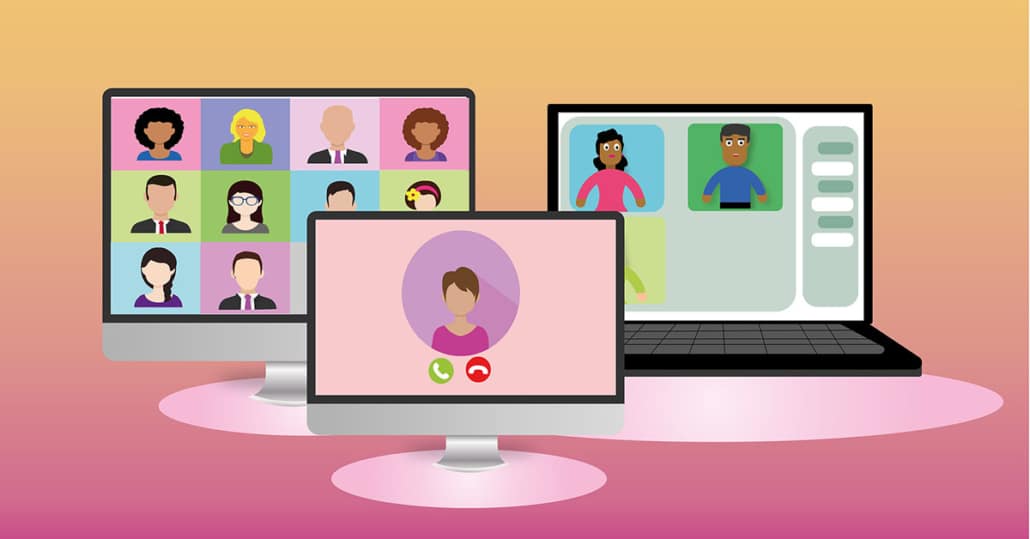5 Healthy Communication Habits
“Communication—the human connection—is the key to personal and career success.”
— Paul J. Meyer
The way we communicate changed in 2020, especially for those of us who were used to working in an office environment. Face-to-face interaction became more difficult. Our quick office pop-ins to deliver messages all but vanished. And we struggled to separate our work life from our home life.
Working from home, which is familiar for so many entrepreneurs, became the norm for countless office workers.
How do we build strong relationships and maintain productivity while many of us continue to work from home? Much of it comes down to consciously adapting our communication habits.
Amy Haran, USANA’s Executive Vice President of Communications, offered 5 Healthy Communication Habits she’s found to be helpful. I wanted to share some of her advice here.

Communication is key. Here are 5 Healthy Communication Habits. Image by Alexandra_Koch from Pixabay.
1. Communicate More
After several weeks of working from home, it became clear my colleagues and I had to be more intentional about sharing information. I now keep a list—along with lists for my other direct reports—to keep track of what I need to share in our weekly meetings. And my employees keep a similar list for me.
Being intentional in our communications should extend to our relationships across the company. We don’t see each other in hallways or cubicle walk-by’s anymore—meaning, we need to make an effort to ask for and share information with each other.
When in doubt, err on the side of sharing information with a wider group.
2. Check in Often
Meetings: We all love to hate them, but they’re an important tool to stay connected in today’s remote workplace. And if handled well, they can actually be fun.
Several meeting types that should take priority on your calendar:
- Formal Development Meetings: Surprise! Giving timely feedback and understanding each other’s expectations did not go on hold during the pandemic. Consider monthly employee-led check-ins and quarterly manager-led meetings—and add them to your calendar.
- One-on-One Check-ins: Aside from these employee development meetings, less formal and more frequent check-in meetings are necessary for most employees these days. I’ve found that weekly check-ins have worked best for most of my direct reports. We usually jump on WebEx to share updates, discuss challenges, and catch up on what’s happening in each other’s lives. And turning on our cameras always helps us connect even more.
- Team Meetings: All of the teams who report to me have increased the frequency of their meetings—to twice a week or even a quick, daily WebEx—to address pressing concerns, give progress updates, and maintain relationships. Be sure to leave some time for coworkers to catch up or play a quick game. It’s easy to get distracted in web meetings, especially with your camera off. Just remember, your participation and focus in these meetings are key to staying informed and maintaining your team’s culture.
3. Choose the Right Communication Channel
At USANA, we’re fortunate to have many ways to communicate with each other, including WebEx meetings and messages, email, text, Slack, Zoom, Jabber, and the good, old-fashioned phone. But all of these choices can lead to confusion about what channel to use and when.
With no hard or fast rules to follow, considering everything from the sensitivity to the urgency of your message will help.
Which Channel?
- Email: Info that’s straightforward, non-sensitive, non-urgent, and doesn’t require a lot of discussion or responses (e.g. A monthly project update to a large group)
- Video Meetings: Collaborative meetings, sensitive messages, and complicated topics that require discussion or responses (e.g. A weekly team or employee check-in)
- Chat/Instant Messaging: Quick questions, real-time collaboration, urgent info, or socializing (e.g. A brief project question to a small group)
- Phone: When a video meeting isn’t a viable option and the message is too lengthy, complex, or sensitive to handle via email or chat (e.g. An urgent conversation with your manager about a complicated issue)
- Text: Info or questions that are brief, urgent, and don’t require a lot of collaboration or discussion; also, funny memes (e.g. A heads up to your manager that you’ll be late to an upcoming meeting)
Whatever channel you use, keep it concise, courteous, specific, scannable (if it’s written), and relevant to your audience.
4. Establish Rules of Engagement
Work may be at home these days, but that doesn’t mean the office is open 24/7. Take note of when you reach out to people and ask yourself whether your expectation for response time is fair.
To help navigate changing expectations, many experts recommend you establish “rules of engagement” with your team to make life easier for everyone. These “rules” could include when people are available via email, how often you expect updates from each other, and even “office hours” when managers are free for unscheduled employee conversations.
5. Provide Positivity and Support
In times of crisis, high anxiety, or high stress, employees look to managers for emotional cues. Like COVID, negative emotions are highly contagious. If we’re communicating stress or helplessness, our employees will likely do the same.
Recognizing this doesn’t mean we have to be fake or overly cheerful. Acknowledging the situation or validating someone’s feelings while offering encouragement and trust will go a long way toward helping our coworkers feel calm and confident.
You’ve Got This
“USANA has weathered some big storms this year, and we’re stronger for it,” Haran says. “You are capable of staying connected with your coworkers, maintaining our amazing culture, and remaining focused on your goals—whether you’re working from a cluttered guest bedroom (raises hand) or a corner office.”
To view additional articles in this series, please click here.
Image by Alexandra_Koch from Pixabay



Leave a Reply
Want to join the discussion?Feel free to contribute!